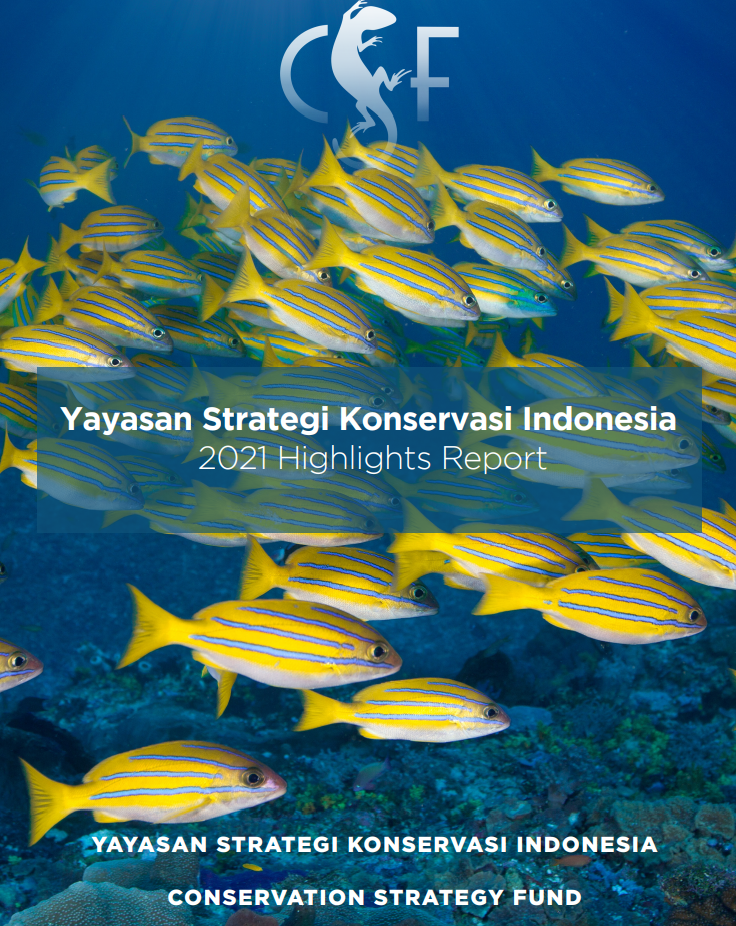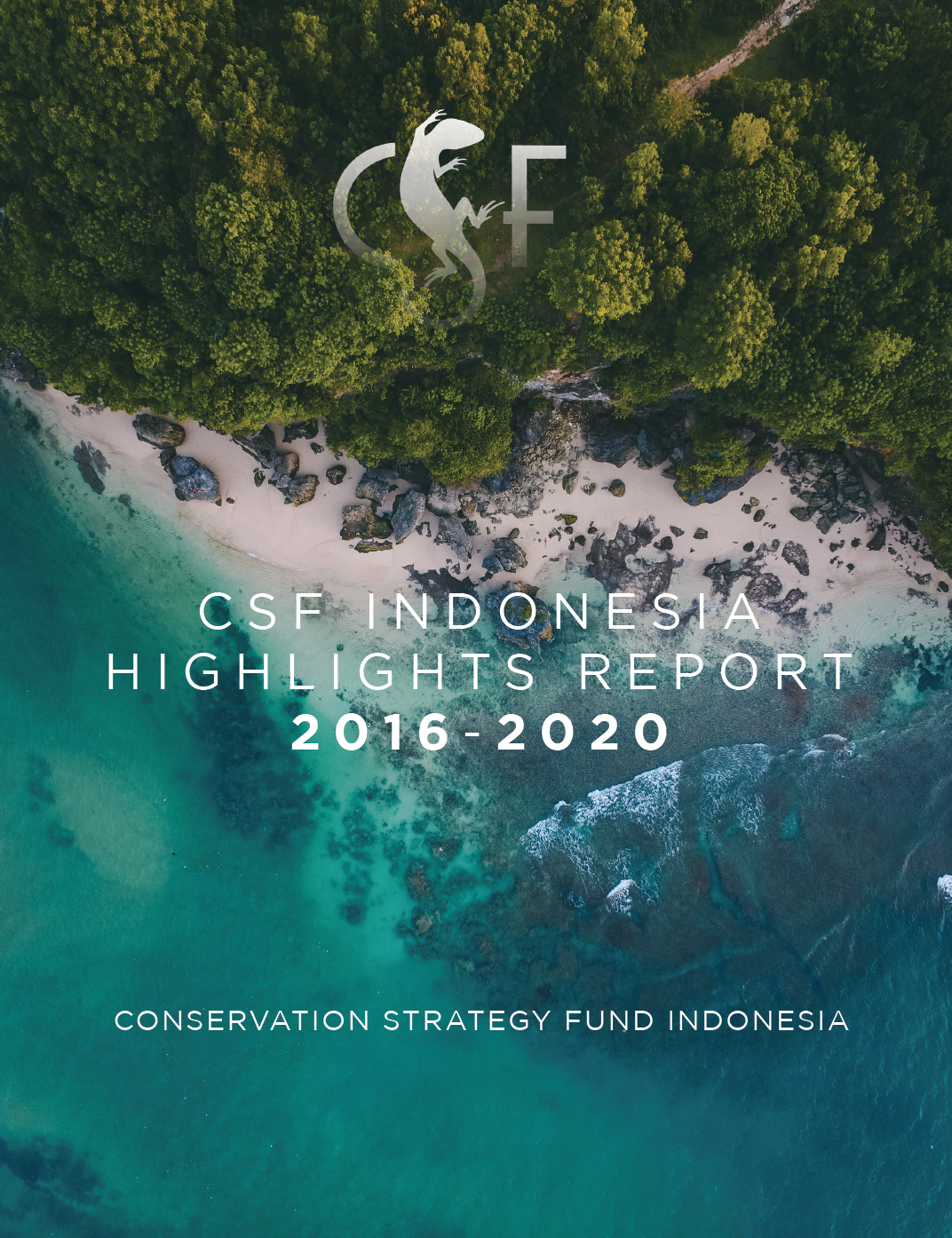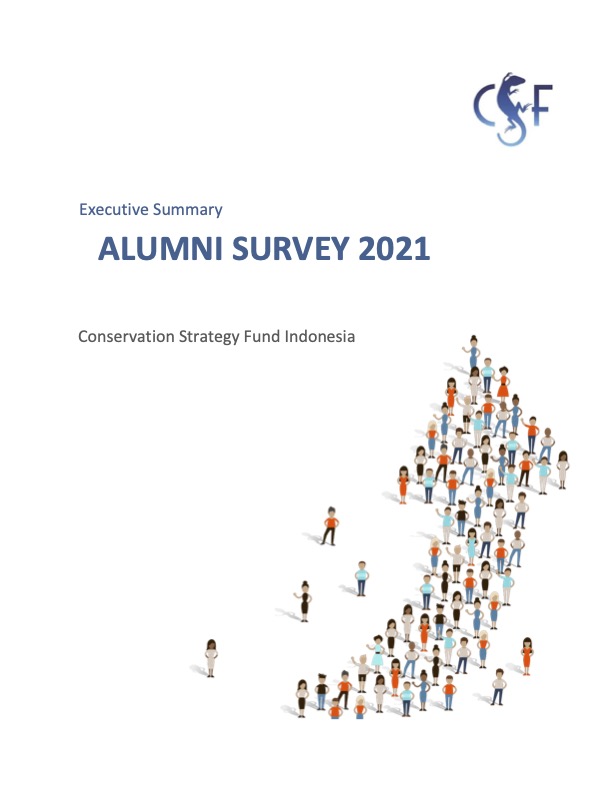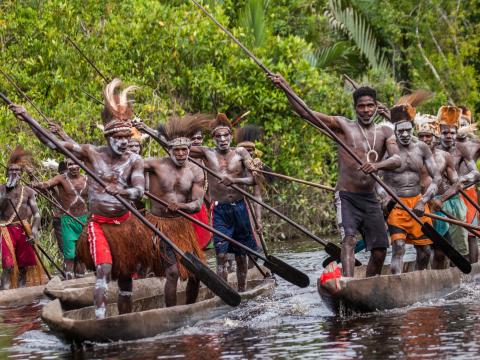What the Forest Is Worth: Valuing Indigenous Economies in Indonesia
Background
The Asmat Regency is one of four regencies in South Papua, an Indonesian province with abundant natural resources, among them tropical forest ecosystems, fisheries, mining, and inland aquatic ecosystems. Natural resource management and economic development are some of the key challenges facing the region and are often assumed to be in opposition to each other.
The Asmat people in Asmat Regency have a rich cultural heritage which includes a unique social system and elaborate wood carvings that communicate stories about beliefs, history, and natural resources. Much of this culture relies on their close relationship and understanding of their environment. This close relationship to the natural environment is both an asset to indigenous peoples and a threat: many are extremely dependent on natural resources and are threatened by changes to them.
CSF recently conducted an in-person assessment of the traditional economy of four Asmat villages and put a value to their daily management of natural resources and their cultural practices. This research is key to encouraging policy-makers to recognise and protect the legitimacy of indigenous peoples and their relationship to the environment.

Our Study
CSF studied four villages in Asmat Regency: Er, Sona, Agani, and Mumugu Satu villages. Village landscapes were generally a mix of swamp and mangrove forests. Not all of this landscape is reachable. In each village, informal and formal discussions were held to obtain an overview of the economic model in the village. Formal discussions included individual in-depth interviews and focus group discussions. On-the-ground reviews and observations of the villages were supplemented with informal discussions.
The main targets of economic valuation were direct benefits, those benefits of natural resources and the environment that are directly felt by the villages in their day-to-day activities. The Asmat indigenous people’s economic system is markedly different from many ‘modern’ economic systems, assigning a complex value system to nature based on social relationships, nutrition, and culture/religion.
Official statistics often miss or discount the economic value of indigenous peoples’ management of natural resources. At the higher level, this lack of recognition for indigenous peoples’ contributions to the environment and economy result in an under-valuation of their role in resource management, sometimes to the point of considering indigenous peoples an obstacle to economic development.
Within Indonesia, indigenous peoples are believed by policy-makers to lack knowledge and economic development value. Instead, indigenous peoples are viewed as hindrances. In a framework where indigenous peoples contribute little to the regional economy and natural resource management has no economic value, large-scale corporate investments are seen by policy-makers as the only option for economic development.
As part of this study, CSF held a training on economic valuation for lecturers from the Faculty of Agriculture and the Faculty of Economics and Business at Musamus University, as well as representatives of the Asmat indigenous community. This much-needed capacity building will allow participants to carry out further studies and replicate CSF’s approach.
Findings
Almost all villages had some sort of natural environment framework and use arrangements, including natural and hereditary management rights. Within villages, natural resource use is often based on agreements around the use and management of different areas, among them hunting areas and sacred spaces.
The value of direct benefits from natural resource products such as sago, river products, and timber products ranged from 4.3 billion IDR per year in Mumugu Satu village to 16.6 billion IDR per year in Agani village. Indirect benefits such as carbon sequestration and, in the case of Agani Village, the use of river for local transportation, had a value that ranged from 234.9 million IDR per year in Er village to over 2.6 billion IDR per year in Agani village.
Taken as a whole, the economic value of the villages is competitive and highlights the value of natural resources for indigenous peoples. These figures are best understood in the context of mainstream economic indicators such as gross regional domestic product and regional minimum wage. The monthly household economic value of direct use products in each of the villages is above the local monthly minimum wage (3.52 million IDR/month). This suggests that the economic value of the environment’s direct use places communities in a position to fulfill their daily needs at a level that exceeds that of minimum-waged labor.
Recommendations
CSF Indonesia makes several recommendations based on these findings. These valuations suggest that the Indonesian and regional governments need to place greater attention on aligning their policies and plans with indigenous peoples. Physical infrastructure to connect villages to the town of Agats, for example, is much needed. Care must be taken to balance increased connectivity with resulting pressure on natural resources.
At the regional level, CSF Indonesia recommends that indigenous peoples such as the Asmat community are included in the District Work Plan (RKP) and APBD. For this inclusion to be effective, indigenous peoples must be offered legal recognition, protection and promotion. Currently, the villages of Er, Sona, and Agani are under legal recognition of Pomar Sirau tribes, though this recognition must be met with concrete support. One village, Mumugu Satu, lacks recognition of its indigenous community and its rights are therefore uncertain.
Direct use from the environment is the main source of Asmat livelihood and therefore needs to be accounted for at every stage of the village planning process. For example, timber price agreements at the district level should be negotiated such that village communities hold a fair bargaining value. Only one village had a per capita value of direct use that was greater than the regional per capita GDP of Asmat Regency. Asmat Regency has a lower regional GDP than other districts in South Papua Province. Concrete government support is needed to sustainably facilitate the economic potential of the villages and utilize the Village Fund according to collective agreement.
Community capacity to manage natural resources must also be strengthened. This includes increasing indigenous peoples’ awareness of the value of these resources and their relationship to them. When development interventions are presented to indigenous peoples, capacity-building will ensure that they have an appropriate sense of their sovereignty and bargaining position. These economic valuations offer important proxies for the wealth and assets indigenous peoples offer in their management of the environment.
____
CSF Project Details
Location: Asmat Regency, South Papua Province, Indonesia
Partners: WWF Indonesia, Musamus University, LMAA, YASA
Ecosystem(s): Forests/Rivers/ Wetlands
Theme(s): Indigenous Economies/ Agriculture/ Economic Tools/ Ecosystem Services/ Forestry
Dates: September 1, 2023-June 31, 2024
- Log in to post comments




